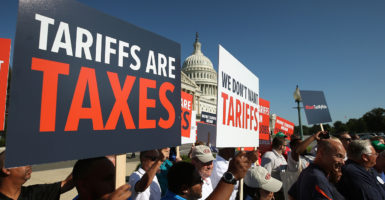In recent days, reports have surfaced highlighting the potential long-term impacts of tariffs imposed by the Trump administration over the last year. Economic growth could drag and close to a million jobs hang in the balance if the trade disputes, particularly with China, persist.
The Congressional Budget Office, in its annual budget and economic outlook, found that the tariffs “will reduce the level of U.S. real GDP [gross domestic product] by about 0.1 percent by 2022.”
However, the costs do not end there. The Congressional Budget Office projects that by 2022 American businesses will export 0.5 percent fewer goods and services, and investment by domestic businesses will be reduced by 0.3 percent.
These percent changes may not seem significant, but even 0.1 percent of a multi-trillion-dollar economy is a lot of lost value.
The U.S. and China are currently in negotiations, which have put any further tariff escalation on hold. However, the tariffs imposed on $200 billion worth of imports on China are set to increase from 10 percent to 25 percent on March 2.
New analysis by Trade Partnership found that should the tariffs be increased, the overall U.S. economy and American jobs could be put at even further risk. The report estimates that U.S. GDP could decrease by 0.37 percent annually and more than 900,000 American jobs could be lost in one to three years.
The economy is complex, and while these reports are just estimates, current statistics are already showing signs of the types of impacts forecasted by the Congressional Budget Office and Trade Partnership.
In December, the Bureau of Economic Analysis released its revised estimates for GDP growth in the U.S. The agency indicated a “deceleration in real GDP growth in the third quarter,” attributed to fewer exports, less nonresidential fixed investment, and a slowing of personal consumption.
In real terms, this means that American businesses are selling fewer goods and services abroad, which is impacting their ability to invest and grow. It also means that American families are buying fewer goods and services.
While positive tax and regulatory policies are driving growth in the economy, the effects of new tariffs on roughly 12 percent of all imports are starting to show. It’s time for the tariffs to go, before these projections become reality and hundreds of thousands of American jobs are lost.































